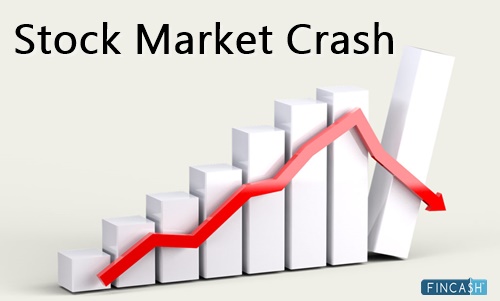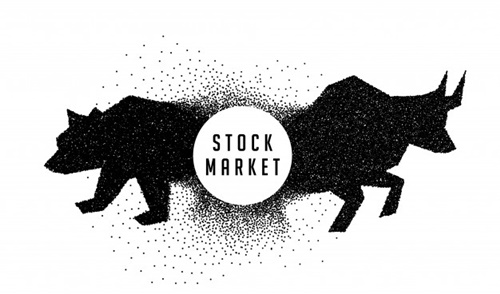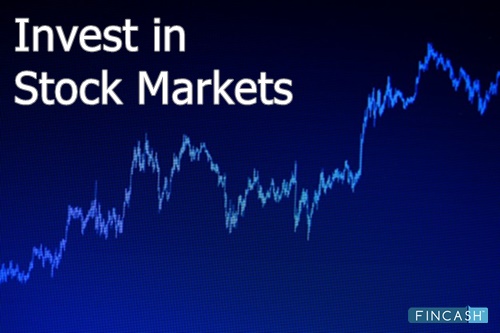Stock Market Crash
What is Stock Market Crash?
A stock Market crash is a rapid and often unanticipated drop in stock prices. A stock market crash can be a side effect of major catastrophic events, economic crisis or the collapse of a long-term speculative bubble. Reactionary public panic about a stock market crash can also be a major contributor to it. Stock market crashes are triggered typically by loss of investor confidence after an unexpected event, and are exacerbated by fear.

Stock market crash are usually preceded by a period of prolonged and high Inflation, political/economic political uncertainty, or hysteric speculative activity. Although there is no specific threshold for stock market crashes, they are generally considered as abrupt double-digit percentage drop in a stock index over the course of a few days.
Reasons for Stock Market Crash
Generally speaking, crashes usually occur under the following conditions-
Excessive Optimism
A prolonged period of rising stock prices and excessive economic optimism
High Valuation
A market where P/E ratios(Price-Earning ratio) exceed long-term averages, and extensive use of Margin Debt and leverage by market participants
Regulatory or Geopolitical
Other aspects such as large-corporation hacks, wars, changes in federal laws and regulations, and natural disasters of highly economically productive areas may also influence a significant decline in the NYSE value of a wide Range of stocks.
Talk to our investment specialist
Stock Market Crash Incidences
Well-known U.S. stock market crashes include the market crash of 1929, which resulted from economic decline and panic selling and sparked the Great Depression, and Black Monday (1987), which was also largely caused by mass panic.
Another major crash occurred in 2008 in the housing and Real Estate market and resulted in what we now refer to as the Great Recession.
1929 Market Crash
After October 29, 1929, stock prices had nowhere to go but up, so there was considerable recovery during succeeding weeks. Overall, however, prices continued to drop as the United States slumped into the Great Depression, and by 1932 stocks were worth only about 20 percent of their value in the summer of 1929. The stock market crash of 1929 was not the sole cause of the Great Depression, but it did act to accelerate the global Economic collapse of which it was also a symptom. By 1933, nearly half of America’s banks had failed, and unemployment was approaching 15 million people, or 30 percent of the workforce.
1962 Kennedy Side
Kennedy Slide of 1962, also known as the Flash Crash of 1962, is the term given to the stock market decline from December 1961 to June 1962 during the Presidential term of John F. Kennedy. After the market experienced decades of growth since the Wall Street Crash of 1929, the stock market peaked during the end of 1961 and plummeted during the first half of 1962. During this period, the S&P 500 declined 22.5%, and the stock market did not experience a stable recovery until after the end of the Cuban Missile Crisis. The Dow Jones Industrial Average fell 5.7%, down 34.95, the second-largest point decline then on record.
1987 Market Crash
In finance, Black Monday refers to Monday, October 19, 1987, when stock markets around the world crashed. The crash began in Hong Kong and spread west to Europe, hitting the United States after other markets had already sustained significant declines. The Dow Jones Industrial Average (DJIA) fell exactly 508 points to 1,738.74 (22.61%). In Australia and New Zealand, the 1987 crash is also referred to as "Black Tuesday" because of the time zone difference
1997 Asian Financial Crisis
The October 27, 1997, mini-crash is a global stock market crash that was caused by an economic crisis in Asia or Tom Yum Goong crisis. The point loss that the Dow Jones Industrial Average suffered on this day currently ranks as the 13th biggest point loss and 15th biggest percentage loss since the Dow's creation in 1896. This crash is considered a "mini-crash" because the percentage loss was relatively small compared to some other notable crashes. After the crash, the markets still remained positive for 1997, but the "mini-crash" may be considered as the beginning of the end of the 1990s economic boom in the United States and Canada, as both consumer confidence and Economic Growth were mildly reduced during the winter of 1997–98 (with neither being strongly affected, compared to the rest of the world), and when both returned to pre-October levels, they began to grow at an even slower pace than before the crash.
1998 Russian Financial Crisis
The Russian financial crisis (also called Ruble crisis or the Russian Flu) hit Russia on 17 August 1998. It resulted in the Russian government and the Russian Central Bank devaluing the ruble and defaulting on its debt. The crisis had severe impacts on the economies of many neighboring countries. Meanwhile, James Cook, the senior vice president of The U.S. Russia Investment Fund, suggested the crisis had the positive effect of teaching Russian banks to diversify their assets.
2000 Market Crash (Dot Com Bubble)
The Nasdaq Composite stock market index, which included many Internet-based companies, peaked in value on March 10, 2000 before crashing. The burst of the bubble, known as the dot-com crash, lasted from March 11, 2000 to October 9, 2002. During the crash, many online shopping companies, such as Pets.com, Webvan, and Boo.com, as well as communication companies, such as Worldcom, NorthPoint Communications and Global Crossing failed and shut down. Others, such as Cisco, whose stock declined by 86%, and Qualcomm, lost a large portion of their market capitalization but survived, and some companies, such as eBay and Amazon.com, declined in value but recovered quickly.
2001 Twin Tower Attack
On Tuesday, September 11th, 2001, the opening of the New York Stock Exchange (NYSE) was delayed after the first plane crashed into the World Trade Center's North Tower, and trading for the day was canceled after the second plane crashed into the South Tower. NASDAQ also canceled trading. The New York Stock Exchange was then evacuated as well as nearly all banks and financial institutions on Wall Street and in many cities across the country. The London Stock Exchange and other stock exchanges around the world were also closed down and evacuated in fear of follow-up terrorist attacks. The New York Stock Exchange remained closed until the following Monday. This was the third time in history that the NYSE experienced prolonged closure, the first time being in the early months of World War I and the second being March 1933 during the Great Depression.
2008 Market Crash - Lehman Crisis
The collapse of Lehman Brothers was a symbol of the Crash of 2008 On September 16, 2008, failures of massive financial institutions in the United States, due primarily to exposure to packaged subprime loans and credit Default swaps issued to insure these loans and their issuers, rapidly devolved into a global crisis. This resulted in a number of bank failures in Europe and sharp reductions in the value of stocks and commodities worldwide. The failure of banks in Iceland resulted in a devaluation of the Icelandic króna and threatened the government with Bankruptcy. Iceland obtained an emergency loan from the International Monetary Fund in November. In the United States, 15 banks failed in 2008, while several others were rescued through government intervention or acquisitions by other banks. On October 11, 2008, the head of the International Monetary Fund (IMF) warned that the world Financial System was teetering on the "brink of systemic meltdown".
The economic crisis caused countries to close their markets temporarily.
All efforts have been made to ensure the information provided here is accurate. However, no guarantees are made regarding correctness of data. Please verify with scheme information document before making any investment.











